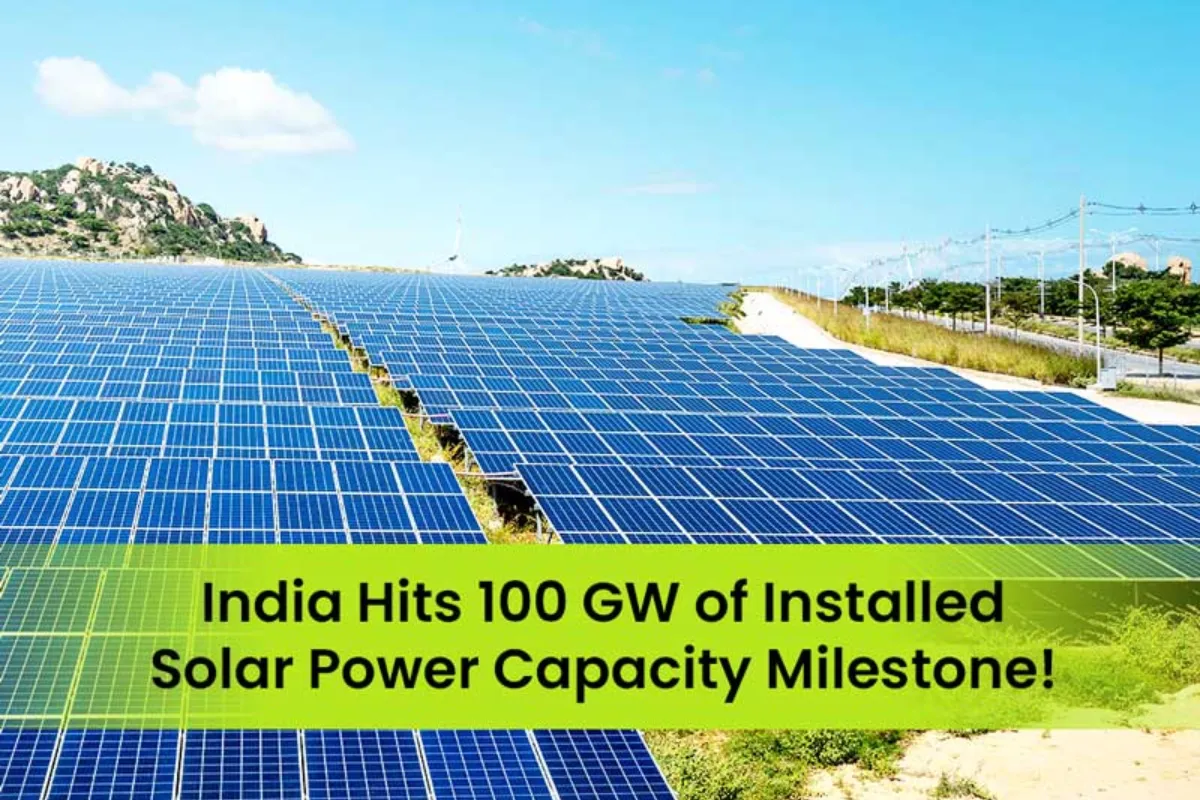In a significant stride towards a sustainable and energy-independent future, India has crossed a historic milestone, achieving 100 GW of solar power capacity. This landmark achievement, a remarkable surge from just 2.82 GW in 2014, solidifies India’s position as a global leader in renewable energy. It is not merely a number but a powerful testament to the nation's commitment to climate action, energy security, and the vision of a self-reliant (Atmanirbhar) Bharat. This success is the result of a decade of focused policy-making, massive investments, and a groundswell of public and private sector participation.
Breaking Down the Solar Surge
The journey to 100 GW has been driven by both large-scale utility projects and a growing focus on decentralized energy. As of July 31, 2025, India's total solar power installed capacity stands at 119.02 GW. This growth is a result of a multi-pronged approach:
- Utility-Scale Projects: The cornerstone of India's solar growth has been the development of massive solar parks in states like Rajasthan and Gujarat, which have emerged as the country’s solar powerhouses. Rajasthan alone has an installed solar capacity of over 28.7 GW, making it the top solar state.
- Rooftop Solar: The focus is now shifting to decentralized power generation. Schemes like the PM Surya Ghar: Muft Bijli Yojana are providing subsidies to incentivize millions of households to install solar panels on their roofs, making every home a potential power plant. This not only reduces electricity bills but also alleviates the strain on the national grid.
- Off-Grid and Agricultural Solutions: The PM-KUSUM scheme has been instrumental in solarizing agricultural practices by providing farmers with solar pumps and decentralized power plants, thereby reducing their reliance on diesel and grid electricity. This has a dual benefit of increasing farmers' income while contributing to the clean energy transition.
The Policy Push: The Backbone of the Solar Revolution
This remarkable growth would not have been possible without a series of transformative government policies:
- National Solar Mission (NSM): Launched in 2010, this mission provided the initial roadmap for India's solar journey, with a target of 20 GW by 2022, which was achieved well ahead of schedule. The target was subsequently revised to 100 GW, demonstrating the government’s growing ambition.
- Production Linked Incentive (PLI) Scheme: To reduce dependence on imported solar components, the government introduced the PLI scheme, which provides financial incentives to domestic manufacturers of high-efficiency solar modules. This has led to a major boost in India's solar PV module manufacturing capacity, which has also recently crossed the 100 GW milestone under the Approved List of Models and Manufacturers (ALMM).
- Renewable Purchase Obligations (RPOs): These mandates require power distribution companies (DISCOMs) to source a certain percentage of their electricity from renewable sources, creating a stable demand for green power.
Challenges and the Road Ahead
Despite this significant achievement, challenges remain. The intermittent nature of solar power necessitates large-scale energy storage solutions, such as battery storage, to ensure grid stability. Land acquisition for massive solar parks and ensuring a robust transmission infrastructure are also key hurdles.
However, the 100 GW milestone is just the beginning. India has set an even more ambitious target: achieving 500 GW of non-fossil fuel capacity by 2030. This will require adding an average of 50 GW of renewable energy every year, a pace that will solidify India's position as a leader in the global clean energy transition. The focus will now be on building a comprehensive renewable energy ecosystem that includes solar, wind, and hydropower, all supported by a modern grid and storage facilities.
Conclusion: India’s achievement of the 100 GW solar power milestone is a powerful symbol of its commitment to a green future. It is a win not just for the environment but also for national security, as it reduces India's dependence on imported fossil fuels. This success story, built on a foundation of proactive government policy and a vibrant domestic industry, serves as a blueprint for other nations to follow. As India looks towards its ambitious 500 GW target, it is clear that the sun is rising on a new, sustainable energy era.







Leave a Reply